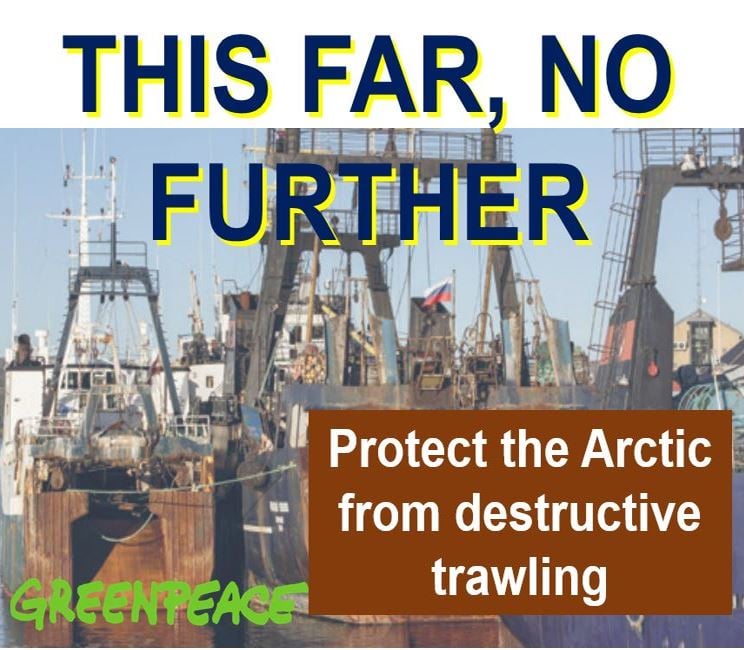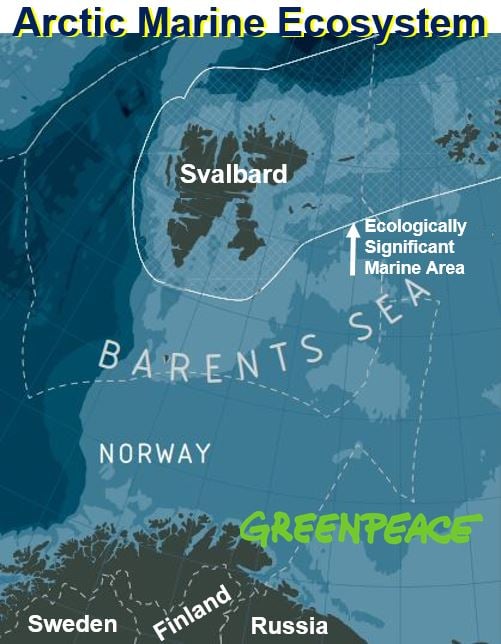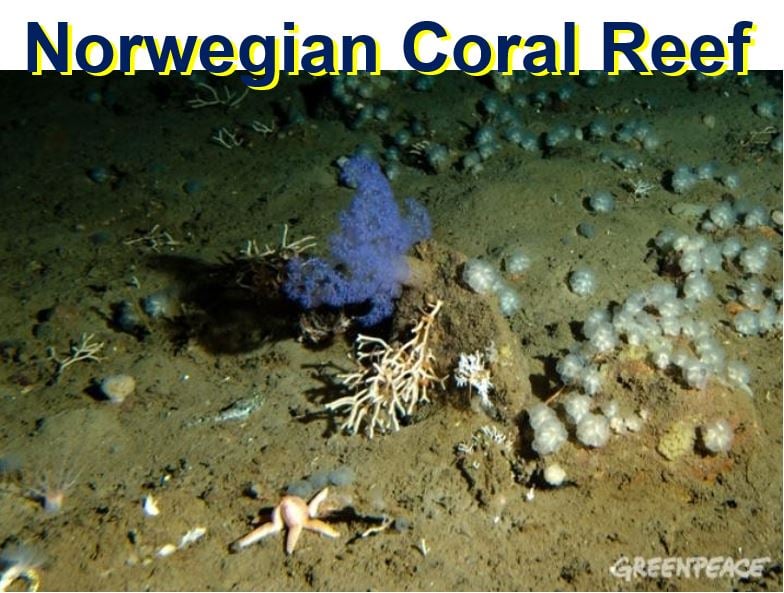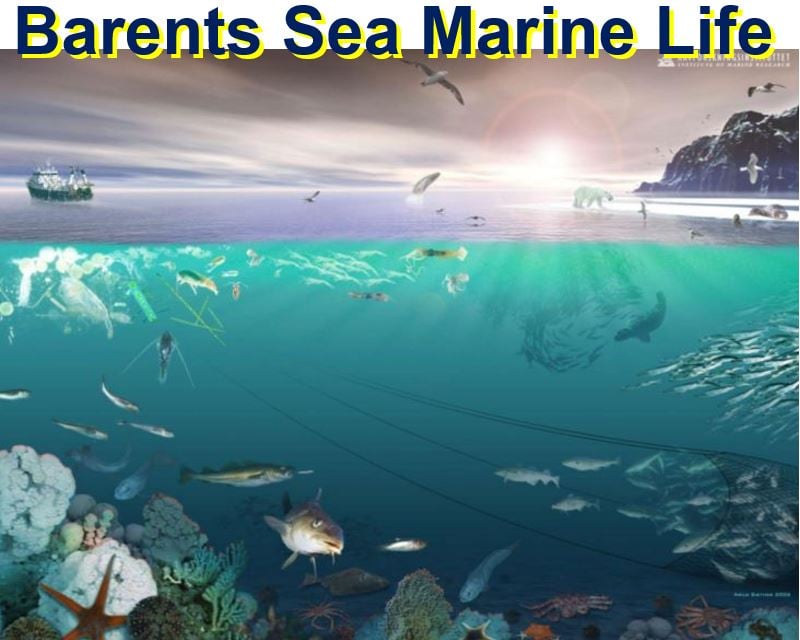Major supermarkets and food brands in Britain are buying fish from controversial giant bottom trawlers that are venturing further north in the fragile Arctic regions, a new Greenpeace investigation has warned. Birds Eye, Iglo Young’s and Findus risk having their supply chain ‘tainted’ because of links with fishing in the northern Barents Sea around Svalbard.
More than 70% of all the Atlantic cod we buy in supermarkets globally comes from the Barents Sea. However, the Greenpeace report – This Far, No Further – says it has evidence that it is being fished further north – a practice that may damage fragile ecosystems and devastate the ocean floor.
The non-governmental environmental organization says that while the practice is not illegal (fishing further north of the Barents Sea), the damage to the area’s delicate ecosystems could be significant.
 Greenpeace wrote: “Investigations by Greenpeace have shown industrial fishing fleets using destructive bottom trawling are invading previously pristine areas of the Barents Sea in the Norwegian Arctic.” (Image: Adapted from Greenpeace Report)
Greenpeace wrote: “Investigations by Greenpeace have shown industrial fishing fleets using destructive bottom trawling are invading previously pristine areas of the Barents Sea in the Norwegian Arctic.” (Image: Adapted from Greenpeace Report)
Get tough with suppliers, urges Greenpeace
If these food companies are serious about promoting sustainable fishing practices, something they claim on their labelling and packaging, this practice might suggest to some people that perhaps their claim is not the same as their actions, especially if they don’t start getting tough with suppliers.
The Greenpeace research team used field work and satellite data to track an ever-growing number of bottom trawlers – the ‘bulldozers’ of the sea – fishing in the northern Barents Sea.
Several vulnerable and endangered species live in the region, including the bowhead whale, the Greenland shark, the polar bear, walruses, as well as rare fish and invertebrates.
Fragile ecosystems need protection
Trillia Fidei, a Greenpeace campaigner, said regarding climate change and the Arctic:
“Climate change is opening up whole areas of the Arctic for the very first time. Some companies see this as a business opportunity, but we think it’s a chance to protect a fragile ecosystem before it’s too late. We cannot destroy a marine environment that we don’t even understand.
“Some of the world’s biggest seafood brands are unwittingly buying cod from this vulnerable area. We’re asking them to get tough with their suppliers to ensure the northern part of the Barents Sea is off limits to giant fishing bottom trawlers.”
 According to the Greenpeace Report: “There are a number of major ecosystems worldwide that are still little affected by human activity, where it is not too late to turn the tide of our unprecedented impacts on the global climate and the biosphere. For the time being, the Arctic marine ecosystem is one of these.” (Image: Greenpeace Report)
According to the Greenpeace Report: “There are a number of major ecosystems worldwide that are still little affected by human activity, where it is not too late to turn the tide of our unprecedented impacts on the global climate and the biosphere. For the time being, the Arctic marine ecosystem is one of these.” (Image: Greenpeace Report)
Bottom trawling, also called ‘dragging’, involves towing a giant fishing net (trawl) with heavy weights along the sea floor. Bottom trawling scoops up everything in its path, from the targeted fish to centuries-old corals.
Experts say that approximately half of Norway’s cold water coral reefs have been destroyed by bottom trawlers.
The Guardian quotes marine conservation biologist Professor Callum Roberts, from the University of York’s Environment Department, who said:
“Over the last 200 years it has converted once rich and complex seabed habitats to endless expanses of shifting sands and mud. Areas of the Arctic protected by sea ice represent one of the last pristine refuges from trawling and need urgent protection to prevent them from suffering the same fate.”
Greenpeace is urging fishing companies to stop fishing in the northern Barents Sea and around Svalbard. Supermarkets, food companies and processors should cut all links with suppliers involved in destructive fishing practices in the region, it adds.
The Norwegian Government is being urged to create a marine protection area in the region.
 Greenpeace quotes the Norwegian Institute of Marine Research, which reported that bottom trawling has damaged 30% to 50% of Norway’s coral reefs. (Image: Greenpeace)
Greenpeace quotes the Norwegian Institute of Marine Research, which reported that bottom trawling has damaged 30% to 50% of Norway’s coral reefs. (Image: Greenpeace)
Food companies issue statement
Findus, iglo and Birds Eye issued a joint statement, saying the Greenpeace report raised some important facts which they will explore further.
In a joint statement, the food companies said:
“We pride ourselves in having taken leadership in driving long-term sustainability within fisheries over the last 20 years. All our brands use cod and haddock from a variety of responsibly managed fisheries. All fish from the Barents Sea, like all the white fish we source, is MSC-certified.”
“The MSC certification of the Barents Sea cod and haddock fishery means that this is managed according to a set of internationally agreed responsible fisheries management principles. These take into account the fishery stock status and the impact on the ecosystem.”
 The Barents Sea is one of Europe’s last large marine ecosystems that remains largely clean. The inflow of warm Atlantic water maintains the southern parts of the sea ice-free all year round and also supports high biological productivity. (Image: eoearth.org)
The Barents Sea is one of Europe’s last large marine ecosystems that remains largely clean. The inflow of warm Atlantic water maintains the southern parts of the sea ice-free all year round and also supports high biological productivity. (Image: eoearth.org)
“The Greenpeace report raises important issues and we will examine this very carefully with regulators, industry experts and NGO partners.”
Tom Pickerell, Technical Director of Seafish, a trade body that represents Britain’s fish and chip shops, said:
“We are already working with some key suppliers to provide them with further scientific data on this issue and inform their understanding of the extent of the sea ice and fishing grounds in the north Barents Sea and any trends in northward migration of fish.”
“Our analysis of the fishing data found that there is very little fishing activity happening in this region apart from a small area to the north-east of Svalbard as the fish (which define any fishery) do not appear to be expanding their range northwards at the present time. However, this means there is an opportunity to develop protective measures to ensure there is environmental management in place for the future.”
The Greenpeace Report concludes with the following message:
“The great lesson of the Barents Sea is that the seafood processing industry, along with consumer-facing companies, can be a key driver for change and that when action by industry is followed up with regulatory and enforcement action by governments, formidable challenges can be overcome for the benefit of all.”
Image – The Truth about Bottom Trawling
Bottom trawling has the same devastating effect on the ocean floor as clearcutting forests has on land.

